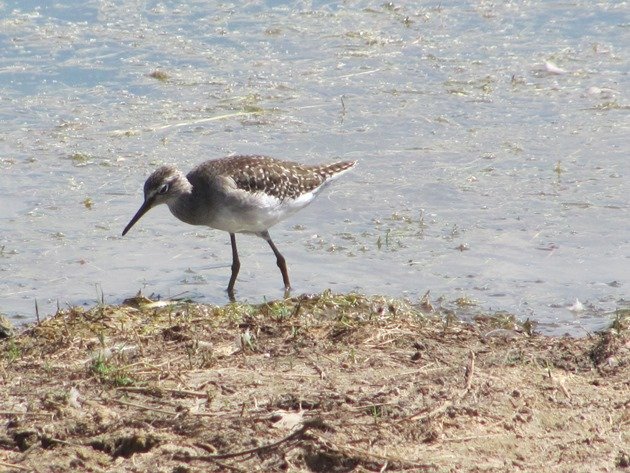
Wood Sandpipers-Tringa glareola are a shorebird species that are found on inland fresh water rather than along the coast. At our local ephemeral lakes the Wood Sandpipers spread themselves around the muddy edges and feed when they return from the north each year. The number of Wood Sandpipers can reach close to one hundred when all the lakes are drying out and there is little choice over habitation. Wood Sandpipers bob their heads at other shorebirds and occasionally take flight towards others to keep them away from the area that it has chosen to feed. Wood Sandpipers can be very aggressive to others of the same species and it is not unusual to see a pair face off at each other and then fly up at each other to defend a feeding area.
Wood Sandpipers are more common in the north of Australia than the south and they breed in the northern hemisphere with a range that covers from Scandinavia in the west to Siberia and Kamchatka in the east. It is presumed that the Wood Sandpipers that spend their non-breeding time in Australia breed in the east, but as yet this has not been proven. We observe the Wood Sandpipers come and go each year, but their exact migration route and breeding grounds remains a mystery.
Despite the field guides indicating that Wood Sandpipers are a “nervous bird” we have found that by sitting quietly against the vehicle at the local ephemeral lakes they will in fact walk right by you. Even with a compact camera you are able to take some photos of the beautiful shorebird as it feeds along the muddy edges. There is a lot of vegetation for the Wood Sandpiper to wade through and it appears to be very successful at finding food and it defends its feeding territory well as we watch!
Wood Sandpiper feeding
The Wood Sandpiper is an easily distinguished shorebird at ephemeral lakes and the only similar species you are likely to see on these lakes are the Marsh Sandpipers. The Marsh Sandpiper has a pale plumage compared to a Wood Sandpiper and the Wood Sandpiper has a very obvious white eye ring, shorter bill and no white on its lower back. For size comparison I have included a photograph of a Black-fronted Dotterel close to a Wood Sandpiper, which is also a shorebird that really can’t be mistaken for anything other than what it is!
Wood Sandpiper and Black-fronted Dotterel
Of course we have nicknames for these birds when they get scribbled in our notebook when we see them and the Wood Sandpiper is a “woody” and a Marsh Sandpiper is a “marshy” and of course a Sharp-tailed Sandpiper is a “sharpy”. The Black-fronted Dotterel is affectionately called a “Y-front”!
This ephemeral lake is the same lake that we have recently observed the Little Ringed Plover, Eastern Yellow Wagtail and the sunbathing Black-breasted Buzzard. It continues to dry out as we patiently await the arrival of our Wet Season rains. With the El Nino cycle once again this year there will no doubt be a shortage of water across the north of Australia.


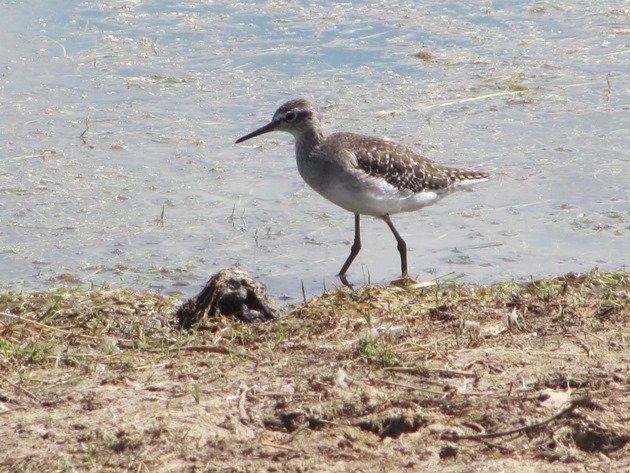
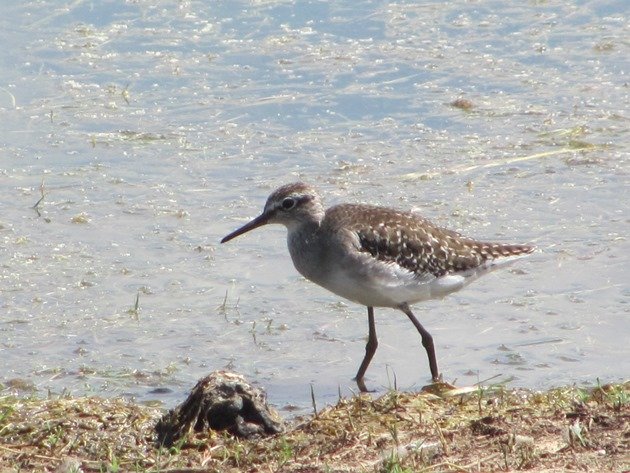
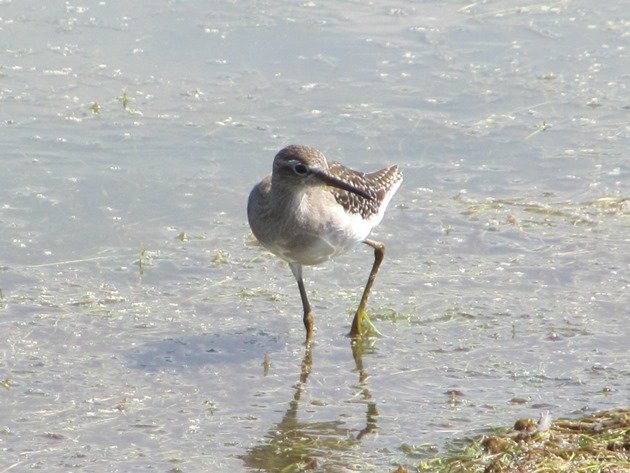
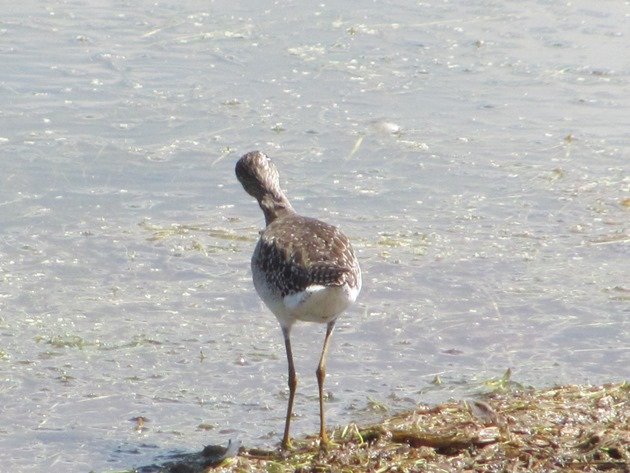
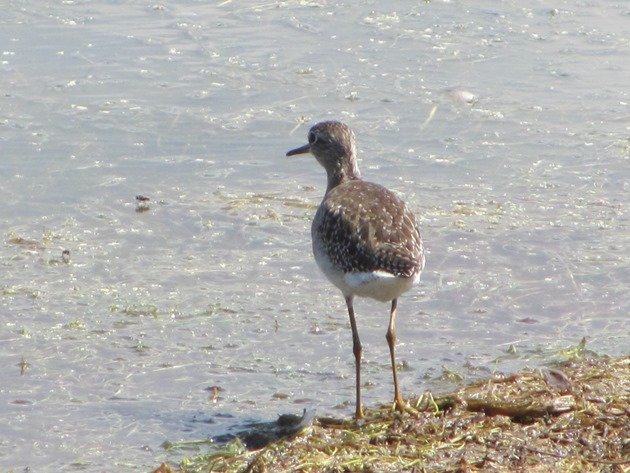
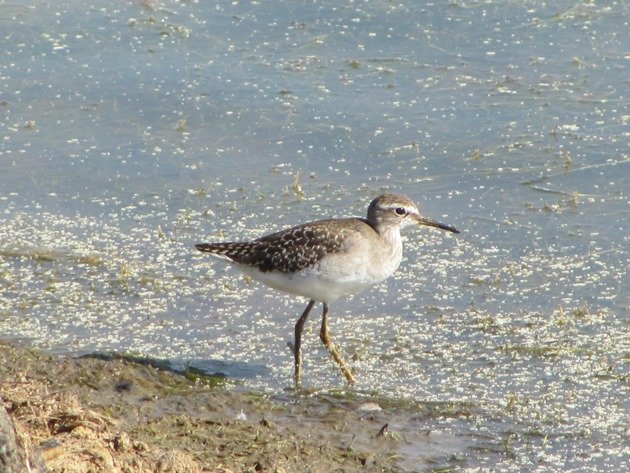
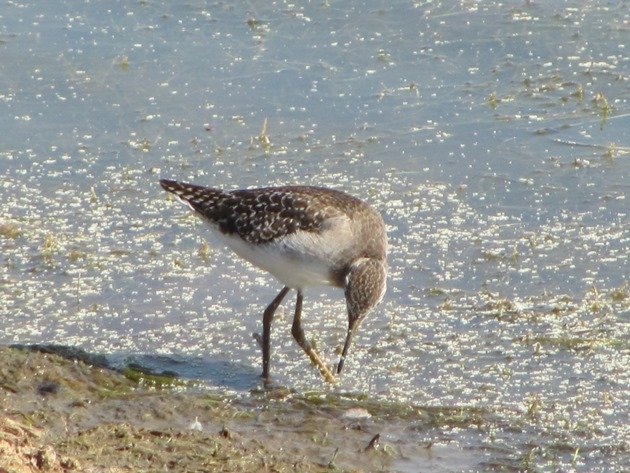
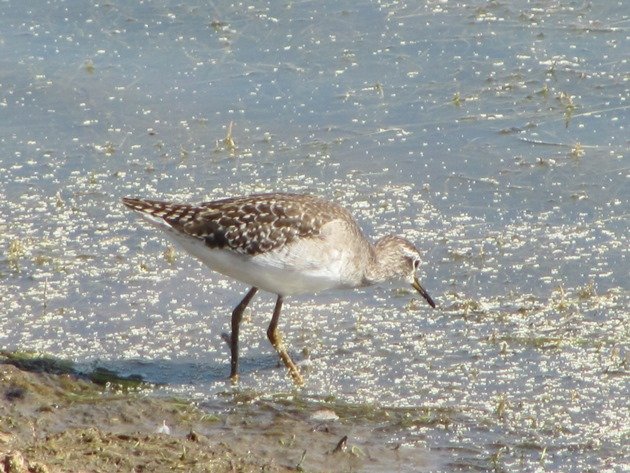
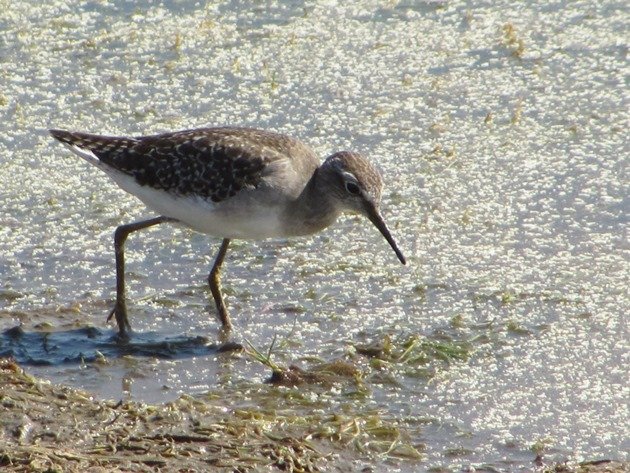
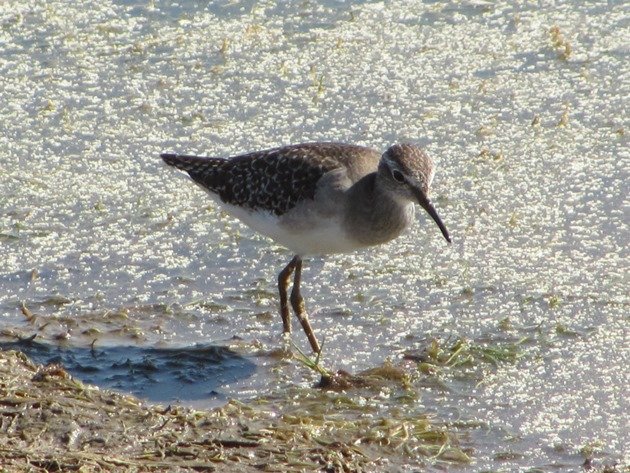
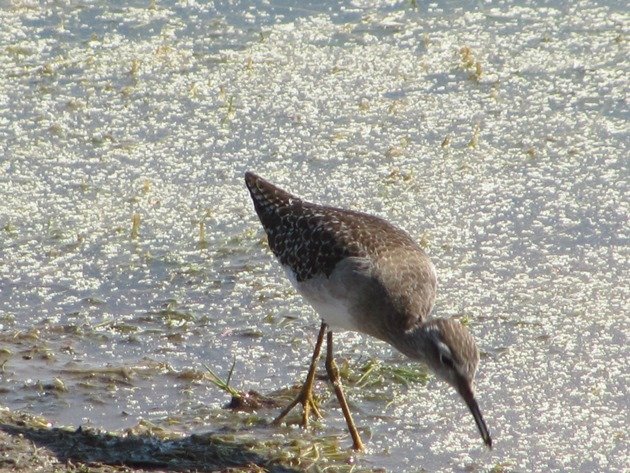
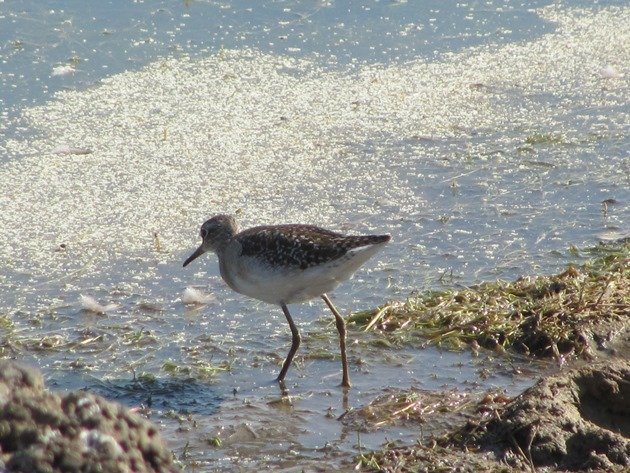
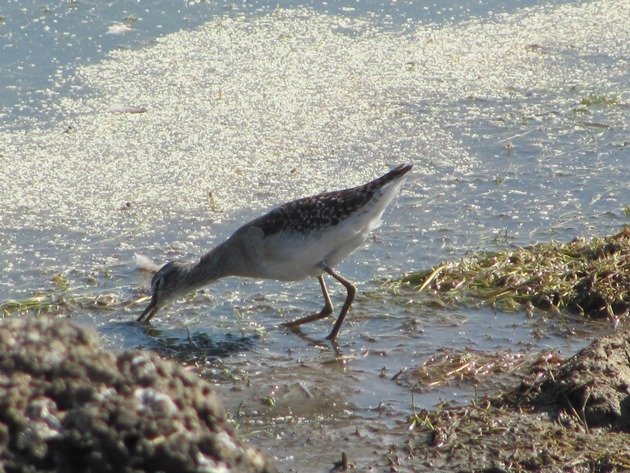
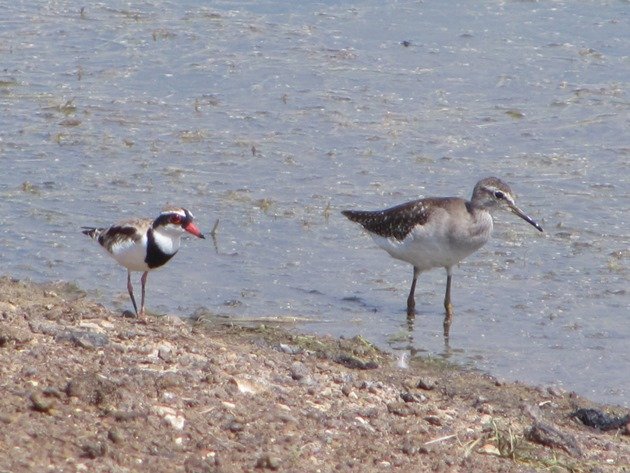











The westernmost breeding Wood Sandpipers are in Scotland, not many of them, but still further west than Scandinavia. Northern Scotland has a few rare breeders which are much more common in Scandinavia. Here in the south of Scotland we get a few on passage each year, mainly in the Aurumn.
Yesterday we saw some in Marble Bar….Australia’s hottest town…at the last remaining water in a waterhole. It was 42c at the time!